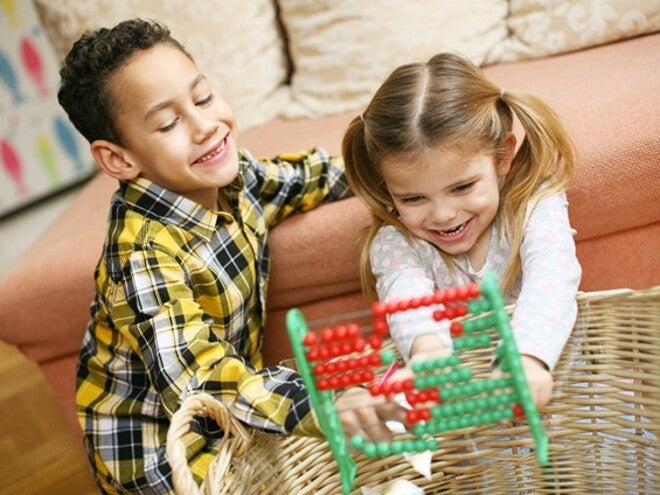Three-year-olds typically count to 10 and they hand over one, two or three items when you ask for them. They also develop classification skills as they learn to group things. This is important for future mathematical development. Here’s what to expect:
- They can sort objects if they can use one rule at a time. In other words, they can sort blocks either by colour or shape in one session. However, if you ask them to do one directly after the other, they will most likely struggle to switch mental gears.
- They can group objects based on where things can be found such as in the kitchen, garden or shop.
- They can use categories and say whether something is an animal, food, toy, clothing, furniture, tool, musical instrument or vehicle. This is based on prior discussions with parents or teachers about what things are used for.
How to build a solid understanding of numbers
Grade Rs typically count to one hundred, but few truly understand the quantities that different numbers describe. Many freeze when you ask: “If Johnny has six balls and Mary has eight balls, who has more?”
Children who don’t understand the value of numbers will naturally not be able to conjure up a mental image of two sets of objects (in this case, a set of six balls and a set of eight balls) and then compare the sets against each other to determine which one of the two is bigger or smaller. As a result, they won't be able to add and subtract with understanding.
Ultimately, every child in Grade R should be able to picture an image in the mind's eye of a number line with each of the numbers in its place, based on the value that it represents.
Sadly, the majority of our South African children across all income groups don't reach this milestone in time.
What can I expect from my child at every age along the way?
Toddlers discover the meaning of “one and many” during their second year of life.
Two-year-olds usually learn to rote count to three and you can teach them to hand you either one or two toys.
Three-year-olds can be expected to count to five and they understand the concepts of one, two and three well enough to be able to hand you that many objects if asked.
Well-developing four-year-olds can be expected to rote count to 10 and count any number of objects from one to five.
Most five-year-olds can count to 20 and have a real understanding of numbers up to 10.
And finally, a six-year-old should be able to count to 100 (also in tens); count any number of objects between one and 20; and arrange the numbers from one to 10 in order to build a number line.
Young children need to experience concepts on three levels for them to develop a clear understanding of the value of different numbers.
1. Engage your child on a physical level, using their entire body. You can, for instance, ask your
three-year-old to move (clap, jump or twirl) one, two or three times.
2. Let your child use their hands to discover the “how-many-ness” of numbers. You can, for instance, ask your child to hand you one, two or three of something whenever the opportunity presents itself.
3. Involve the mind’s eye. You can place a heap of single construction blocks, two-block towers and three-block towers in a bag and take turns with your child to use your sense of touch to find one of each number without looking. Then arrange your towers from one to three.
Our goal is for our children to feel as comfortable with numbers as they are with their own name by the time they enter primary school.
Tip: Understanding numbers
The following game is a simple – yet effective – way to expand a child’s understanding of numbers at three years of age.
Play a game where you put only one, two or three pieces of food (such as blocks of cheese, bread or grapes) in a bowl. Say, “If you can count it, you can eat it!” Repeat with different numbers, but only one, two or three.
When your child counts with a forefinger and touches one piece of food for every word, you can see that they understand the numbers. You have reached an important milestone when the last number said is the one indicating how many pieces of food there are. When this happens, you can introduce four and later five pieces of food.
